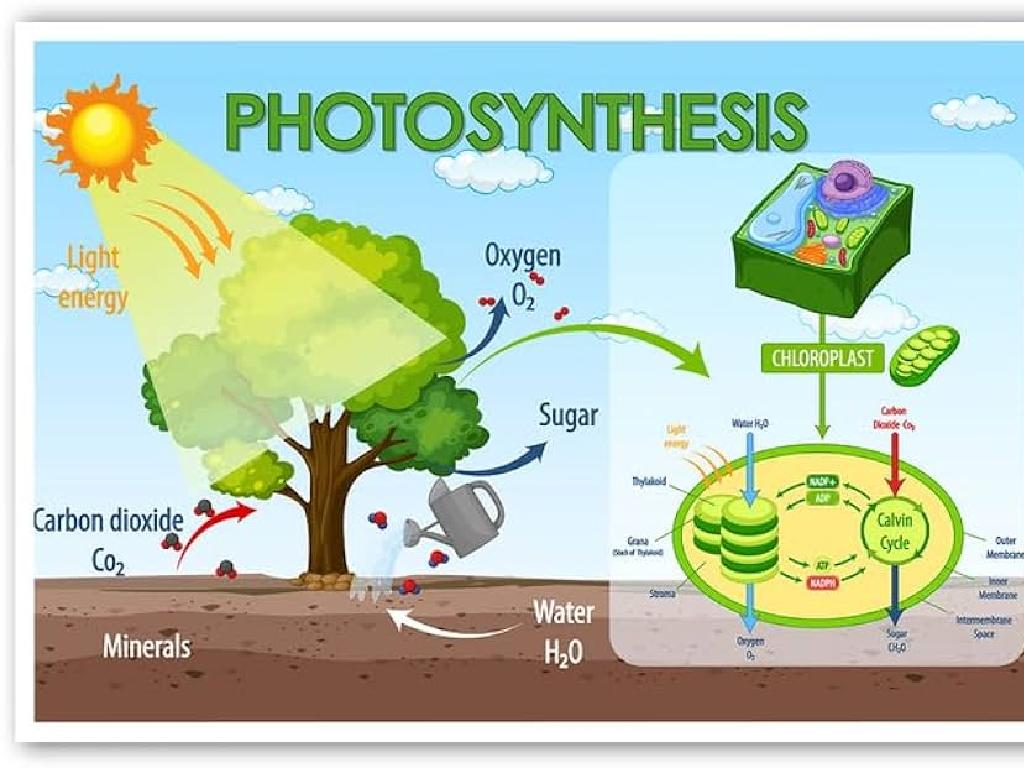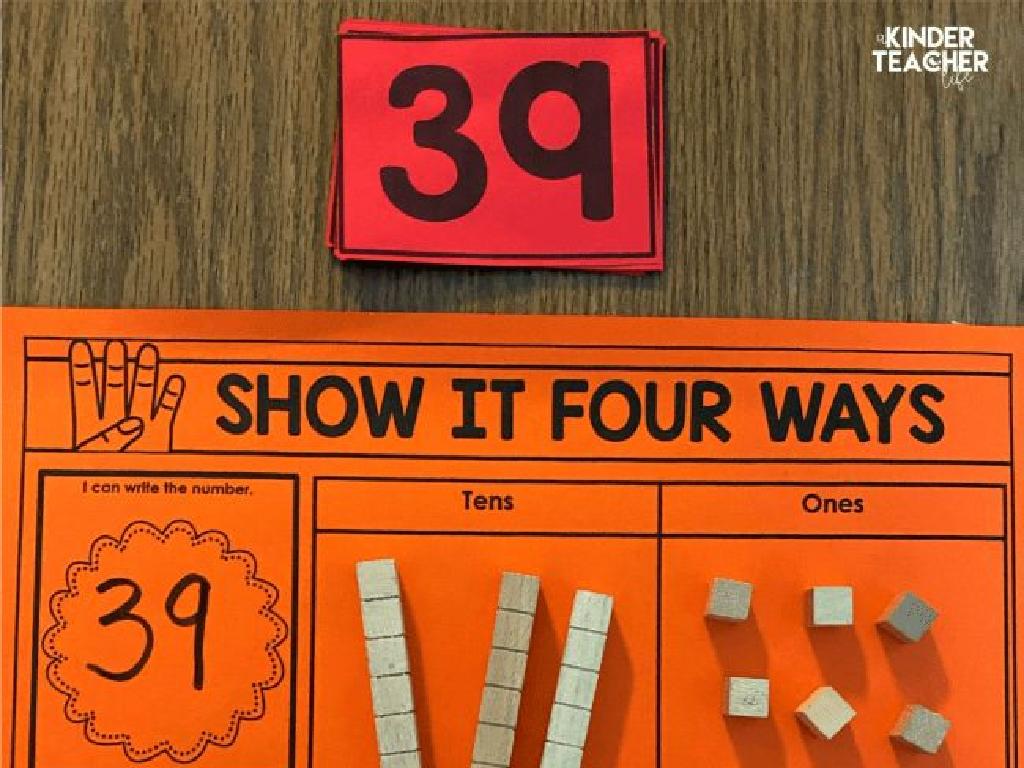Calculate Gross And Net Income
Subject: Math
Grade: Fifth grade
Topic: Financial Literacy
Please LOG IN to download the presentation. Access is available to registered users only.
View More Content
Understanding Gross and Net Income
– What is Gross Income?
– Total money earned before deductions
– What is Net Income?
– Income after all deductions are taken
– Calculating Net from Gross
– Subtract taxes and other deductions
– Importance of Knowing Income
|
This slide introduces students to the basic concepts of gross and net income, which are fundamental to financial literacy. Gross income is the total amount of money earned before any deductions, such as taxes, are taken out. Net income is what remains after all deductions are made. Understanding the difference is crucial for budgeting and financial planning. Teach students how to calculate net income by subtracting deductions from gross income. Emphasize the importance of knowing both types of income when making financial decisions. Provide examples relevant to their understanding, such as allowances or earnings from chores before and after savings or spending.
Understanding Income: Gross and Net
– What is income?
– Money earned from work or gifts
– Types of income
– Wages from jobs, salaries, and bonuses
– Allowance as income
– Weekly allowance is like earning a salary!
– Gross vs. Net income
– Gross is total income, net is what you keep after deductions
|
This slide introduces the concept of income to fifth-grade students, an essential part of financial literacy. Begin by explaining that income is the money people earn for doing a job or receive as a gift. Discuss the different types of income such as wages for hourly jobs, salaries for full-time positions, and bonuses for extra work or achievements. Relate the concept to students by comparing their weekly or monthly allowance to a salary, helping them understand that it’s a form of income. Finally, differentiate between gross income (the total amount before anything is taken out) and net income (the amount you get after taxes and other deductions). Use examples relevant to their understanding, such as calculating how much they would ‘take home’ from their allowance if they had to pay for hypothetical expenses like school supplies or contributions to a savings fund.
Understanding Gross Income
– Gross Income: Total earnings
– It’s the amount before deductions like taxes
– Imagine it as your ‘whole pie’
– Examples of Gross Income
– Wages, salaries, tips, and bonuses
– Importance of knowing Gross Income
– Helps plan spending and saving
|
Gross income is a crucial concept in financial literacy, representing the total amount of money earned before any deductions such as taxes, social security, and retirement contributions. It’s important for students to understand this as the starting point of their earnings. Use everyday examples like allowances or payment for chores to illustrate gross income. Explain that knowing their gross income is essential for budgeting and financial planning, as it determines how much they can allocate towards savings, expenses, and other financial goals. Encourage students to think about their own or their family’s sources of income and how they contribute to the ‘whole pie.’
Understanding Net Income
– Net Income: Your take-home pay
– Deductions: Taxes and insurance
– Money taken out before you receive your pay
– ‘Piece of the pie’ analogy
– Imagine a pie: Deductions are slices given away
– Real-world net income examples
– A paycheck after deductions, like $1,500 instead of $2,000
|
Net income is the amount of money you actually receive in your paycheck after all the deductions are taken out. Deductions can include federal and state taxes, Social Security, health insurance, and retirement contributions. To help students understand, compare it to a pie where slices are shared with others (deductions) before you get your piece. Provide relatable examples, such as how a babysitting job might earn them $50, but if they had to pay taxes or other fees, they might take home $40 as their net income. This concept is crucial for financial literacy, teaching students the difference between gross income (total earnings) and net income (what you actually get to spend).
Understanding Deductions from Income
– What are deductions?
– Money taken out for taxes, Social Security, health insurance
– Deductions’ impact on gross income
– Gross income is total pay before deductions
– The necessity of deductions
– Deductions fund government services and future benefits
– Calculating net income
– Subtract deductions from gross to get net income
|
This slide aims to explain the concept of deductions to fifth graders in a simple and relatable way. Deductions are amounts taken out of a person’s total earnings (gross income) for things like taxes, Social Security, and health insurance. It’s important for students to understand that these deductions are used to fund various services and benefits that they may see in their community or that will benefit them in the future. To calculate what someone actually takes home, or their net income, they must subtract these deductions from their gross income. Use relatable examples, such as a weekly allowance before and after buying necessary school supplies, to illustrate the concept of net income.
Calculating Gross and Net Income
– What is Gross Income?
– Total earnings before deductions, e.g., a weekly allowance
– How to find Net Income
– Net Income is what you earn after deductions
– Deductions from Gross Income
– Deductions can be taxes, social security, etc.
– Class Activity: Your Hypothetical Pay
|
Introduce students to the concept of Gross Income by explaining it as the total amount of money earned before anything is taken out, like an allowance or payment for chores. Then, explain Net Income as the money they get to keep after deductions such as taxes or social security are subtracted from their Gross Income. Provide simple examples to illustrate these concepts. For the class activity, create a fun scenario where students calculate their hypothetical income from a pretend job, including figuring out deductions to find their Net Income. Provide worksheets with different scenarios and deduction rates. Encourage students to discuss their results and understand the importance of budgeting with Net Income.
Understanding Net Income for Budgeting
– Importance of Net Income
– Net Income is what you actually earn after deductions and is vital for budgeting.
– Planning with Net Income
– Use Net Income to plan monthly expenses like food, rent, and entertainment.
– Net Income for savings
– Decide how much of your Net Income should go into savings each month.
– Budgeting Activity
|
This slide emphasizes the importance of understanding and calculating Net Income for effective budgeting. Students will learn that Net Income is the amount of money they have available after all deductions, such as taxes, are taken out from their Gross Income. It’s crucial for planning because it represents the actual money they can spend or save. Teach students how to categorize expenses and the importance of setting aside a portion of their Net Income for savings. The activity involves creating a simple budget based on hypothetical Net Income, which will help students practice allocating funds for different needs and wants, reinforcing the concept of financial responsibility.
Class Activity: Income and Budgeting
– Calculate Gross and Net Income
– Use scenarios to find total earnings and after deductions
– Plan a budget using Net Income
– Deduct expenses from Net Income to allocate savings
– Share your budget with the class
– Present your budget and explain your choices
– Learn budgeting tips from peers
– Listen and discuss different budgeting strategies
|
This interactive class activity is designed to help students understand the concepts of gross and net income and the importance of budgeting. Provide students with realistic income scenarios, including wages and potential deductions such as taxes and health insurance. Once they calculate net income, guide them to create a simple budget plan, allocating funds for savings, necessities, and leisure. Encourage students to share their budget plans with the class and discuss the reasoning behind their financial decisions. This will foster a collaborative learning environment where students can learn from each other’s approaches to budgeting. Possible activities include role-playing different salary scenarios, using worksheets to calculate incomes, and creating poster presentations of their budgets.
Understanding Income: Recap & Questions
– Recap: Gross vs. Net Income
– Gross income is your total earnings; net income is what you keep after deductions.
– Why financial literacy matters
– Learning about income helps with budgeting and making smart money choices.
– Your questions are welcome!
– Let’s clarify any doubts
|
As we conclude today’s lesson on financial literacy, specifically focusing on gross and net income, it’s important to recap the key differences. Gross income is the total amount you earn before anything is taken out, while net income is the amount you have left after deductions like taxes and social security. Understanding these concepts is crucial for effective budgeting and financial planning, which are essential skills in everyday life. Now, let’s open the floor for any questions the students may have. This is an opportunity for clarification and to ensure that everyone understands how to calculate and differentiate between gross and net income. Encourage the students to ask questions and express any confusion they might have. It’s important that they leave the class with a clear understanding of these fundamental financial concepts.






